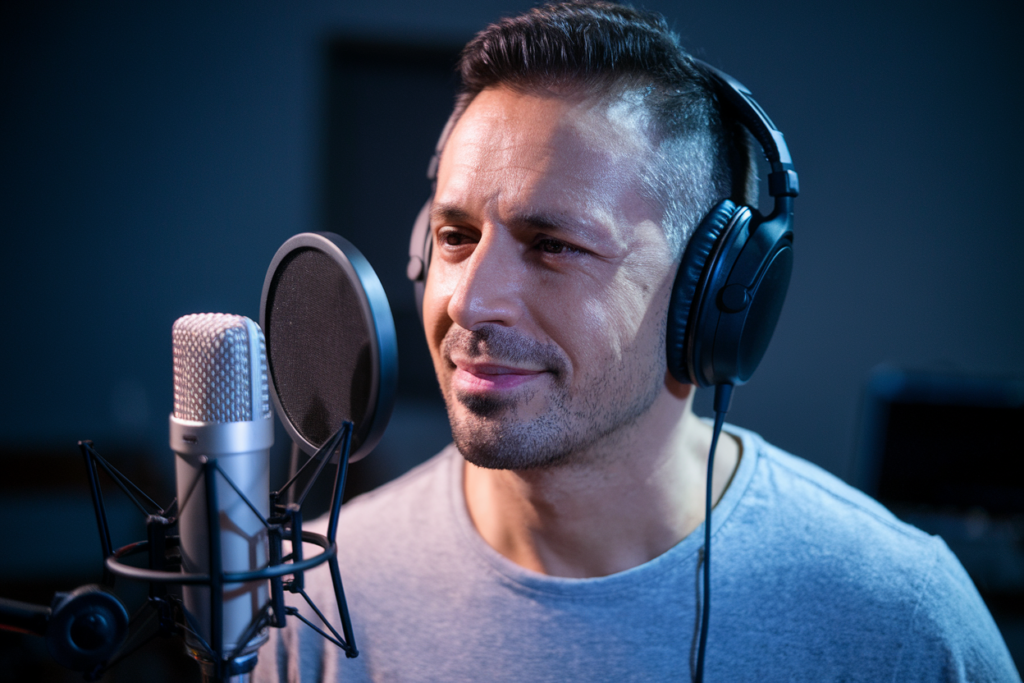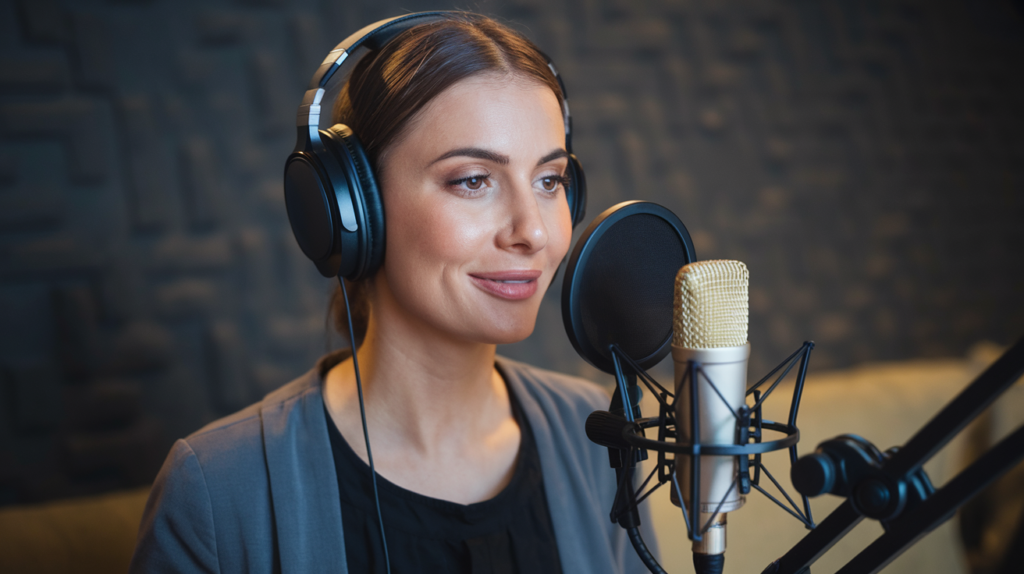Key Takeaways
- Understanding regional Turkish dialects is crucial for voice actors to deliver authentic performances that resonate with audiences.
- Each dialect, such as the Aegean and Southeastern, brings unique cultural nuances that enhance character depth and relatability.
- Mastering local slang and idiomatic expressions fosters a deeper connection with listeners, making performances more engaging.
- Training in specific dialect features, including pronunciation and intonation, can significantly boost a voice actor’s skill set and marketability.
- Awareness of cultural significance helps avoid misinterpretation in voice acting, ensuring messages align with the intended audience’s background.
- As demands for authenticity grow, adapting to trends in regional dialects will be essential for success in the evolving voice acting industry.
Ever wondered how regional Turkish dialects can shape the world of voice acting? In a country rich with diverse cultures and languages, understanding these dialects isn’t just fascinating; it’s essential for any aspiring voice actor. Each region brings its unique flavor, making characters come alive in ways that resonate deeply with audiences.
Overview Of Regional Turkish Dialects
Regional Turkish dialects play a pivotal role in the voice acting landscape. These dialects reflect the rich cultural tapestry of Turkey, with each region contributing its unique flavor to the language. Understanding these variations is essential for any voice actor aiming to deliver authentic and relatable performances.
Turkey’s diverse geography leads to distinct linguistic characteristics across regions. For instance, the Aegean dialect features softer pronunciations and influences from Greek due to historical interactions. In contrast, the Eastern Anatolian dialect showcases a more rugged sound, often influenced by Kurdish and Arabic languages. This variety equips voice artists with a range of options when choosing how to portray characters.
Voice actors who master these regional nuances can enhance their skills significantly. They create depth in characters by using specific dialects that resonate with audiences familiar with those speech patterns. Additionally, knowing which dialect to employ can help tailor projects for local markets or international adaptations.
Moreover, understanding regional slang and idiomatic expressions enriches your performance as a voiceover talent. It allows you to connect authentically with listeners, making your work more engaging and believable. Each dialect carries its own set of cultural references that can add layers of meaning to your delivery.
Delving into regional Turkish dialects not only broadens your abilities as a voice artist but also opens up new opportunities in various projects. Embracing this diversity makes you stand out in an increasingly competitive field while ensuring that every character you portray resonates deeply with its intended audience.
Importance Of Dialects In Voice Acting
Understanding regional dialects plays a pivotal role in voice acting. It helps you connect with diverse audiences and enhances the authenticity of your performances.
Enhancing Character Authenticity
Mastering regional Turkish dialects allows you to breathe life into characters. Each dialect carries its own cultural nuances, which can significantly shape how a character is perceived. For instance, using the Aegean dialect’s softer sounds can evoke warmth and familiarity, while the Eastern Anatolian dialect might lend a sense of strength or resilience. When you adopt these unique vocal traits, your portrayal becomes more believable and relatable, making it easier for listeners to immerse themselves in the story.
Audience Engagement
Engaging an audience requires more than just delivering lines; it demands connection. By incorporating local slang and idiomatic expressions specific to each region, you foster a deeper bond with your listeners. Imagine how much more impactful a performance feels when it resonates with cultural references familiar to them! This attention to detail not only captivates but also retains audience interest, ensuring that your voiceovers stand out in an increasingly competitive market.
Key Regional Dialects In Turkey
Understanding regional dialects is essential for voice actors aiming to connect with diverse audiences. Each dialect offers unique sounds and cultural references that enhance performances.
Aegean Dialect
The Aegean dialect features softer pronunciations, influenced by Greek language characteristics. This gentle tone evokes warmth and friendliness, making it perfect for voiceovers aimed at eliciting emotional responses. Voice artists can use this dialect to create relatable characters, particularly in romantic or lighthearted contexts. Familiarity with local slang enriches dialogues further, allowing for more authentic interactions within the narrative.
Black Sea Dialect
The Black Sea dialect stands out due to its distinct intonations and energetic expression. Often perceived as lively and spirited, this dialect captures attention effortlessly. Voice talents using the Black Sea dialect can convey a sense of enthusiasm or playfulness, ideal for animated characters or engaging presentations. Mastering this accent provides an edge in reaching audiences who resonate with its vibrant energy.
Southeastern Dialect
The Southeastern dialect incorporates influences from Kurdish and Arabic languages, resulting in a rugged sound that conveys strength and depth. For voice actors portraying strong characters or narratives filled with resilience, this dialect serves as a powerful tool. Understanding the cultural nuances tied to this region allows voiceover artists to deliver impactful performances that truly reflect the character’s background and emotional journey.
By mastering these regional Turkish dialects, you not only expand your range but also enhance your ability to resonate with various audiences through authentic storytelling.
Challenges In Voice Acting With Dialects
Voice acting with regional dialects presents unique challenges that require careful navigation. Understanding these nuances is key for voice actors aiming to deliver authentic performances.
Cultural Misinterpretation
Cultural misinterpretation can significantly impact a voiceover’s effectiveness. Each dialect carries cultural significance, and failing to grasp these subtleties may lead to unintended messages or stereotypes. For example, using the Aegean dialect in a context meant for the Southeastern region could confuse listeners, as it lacks the specific cultural references tied to that area. Voice actors must immerse themselves in the culture behind each dialect, ensuring their portrayal resonates with local audiences while avoiding miscommunication.
Training And Skill Development
Training and skill development play crucial roles in mastering regional dialects. Aspiring voice artists often benefit from specialized workshops focused on Turkish dialects. These sessions can provide insights into pronunciation, intonation, and rhythm unique to each region. Practicing with native speakers enhances understanding and helps identify commonly used phrases and idiomatic expressions vital for authentic delivery. Engaging in continuous learning not only boosts your abilities but also elevates your status among clients seeking top-notch voiceover talent who can bring diverse characters to life authentically.
Future Trends In Regional Dialects And Voice Acting
Regional dialects in voice acting are set to evolve significantly. As audiences become more diverse, the demand for authenticity in performances increases. You might wonder how this impacts voiceover talent today.
Voice artists are adapting to this trend by honing their skills in various regional accents. This flexibility allows them to connect with different demographics, creating a more immersive experience for listeners. For instance, you may notice that voice actors now prioritize mastering local slang and idiomatic expressions to enhance relatability.
Technology also plays a crucial role in shaping the future of regional dialects. With advanced audio editing software and AI-driven tools, it’s easier than ever for voice over actors to refine their craft. These innovations help capture the subtle nuances of each dialect, resulting in high-quality performances that resonate deeply with audiences.
Moreover, training programs focusing on regional dialects are gaining popularity among aspiring voice talents. Workshops led by experts provide valuable insights into pronunciation and intonation unique to specific Turkish regions. Engaging with native speakers further enriches understanding, ensuring authentic delivery during recordings.
As global collaboration becomes commonplace, cross-cultural projects will likely increase. Voice over artists who embrace linguistic diversity will stand out as clients seek unique character portrayals that reflect various cultural backgrounds.
Staying attuned to these trends not only enhances your skill set but also positions you competitively within the industry. By embracing regional dialects and continually refining your abilities, you can captivate audiences and leave a lasting impression through your voiceovers.
Conclusion
Embracing regional Turkish dialects in voice acting not only enhances your skills but also enriches the authenticity of your performances. By mastering these unique sounds and cultural nuances, you can create characters that resonate deeply with diverse audiences.
As you navigate this competitive field, understanding local slang and idiomatic expressions will strengthen your connection with listeners. Continuous training and immersion in these dialects allow you to refine your craft, ensuring your voiceovers stand out.
With the growing demand for authentic portrayals, adapting to regional variations will set you apart as a voice artist. Stay committed to learning and evolving in this dynamic landscape, and you’ll leave a lasting impression on every audience you engage with.
Frequently Asked Questions
What are regional Turkish dialects, and why are they important in voice acting?
Regional Turkish dialects reflect the diverse cultures and languages within Turkey. They enhance voice actors’ performances by adding authenticity, allowing characters to resonate more deeply with audiences. Understanding these dialects is crucial for creating relatable and engaging characters.
How do Turkey’s geography and history influence its dialects?
Turkey’s varied geography contributes to distinct linguistic characteristics across regions. Historical influences from neighboring cultures shape each dialect’s unique sounds, such as the softer Aegean dialect influenced by Greek or the rugged Eastern Anatolian dialect shaped by Kurdish and Arabic.
What benefits do voice actors gain from mastering regional slang?
Mastering regional slang enriches voiceover performances by fostering authentic connections with listeners. It helps portray characters realistically, making them more relatable and memorable while enhancing audience engagement through culturally relevant expressions.
What challenges do voice actors face when using regional dialects?
One major challenge is cultural misinterpretation; each dialect carries specific cultural significance. Voice actors must understand these nuances to avoid unintended messages or stereotypes that could negatively impact their portrayals.
How can aspiring voice artists improve their skills in regional dialects?
Aspiring voice artists can benefit from specialized training workshops focusing on Turkish dialects. Practicing with native speakers enhances understanding of pronunciation, intonation, and commonly used phrases necessary for authentic delivery.
What future trends are emerging in regional Turkish dialects and voice acting?
As audiences become more diverse, there’s an increasing demand for authenticity in performances. Voice artists are adapting by honing skills in various accents while leveraging technology like audio editing software to capture subtle nuances effectively.
Why should clients prioritize hiring voice talent familiar with regional accents?
Clients should seek out talent skilled in regional accents because it enhances character portrayals that reflect various cultural backgrounds. Unique voices help captivate audiences and make storytelling more impactful within different markets globally.







